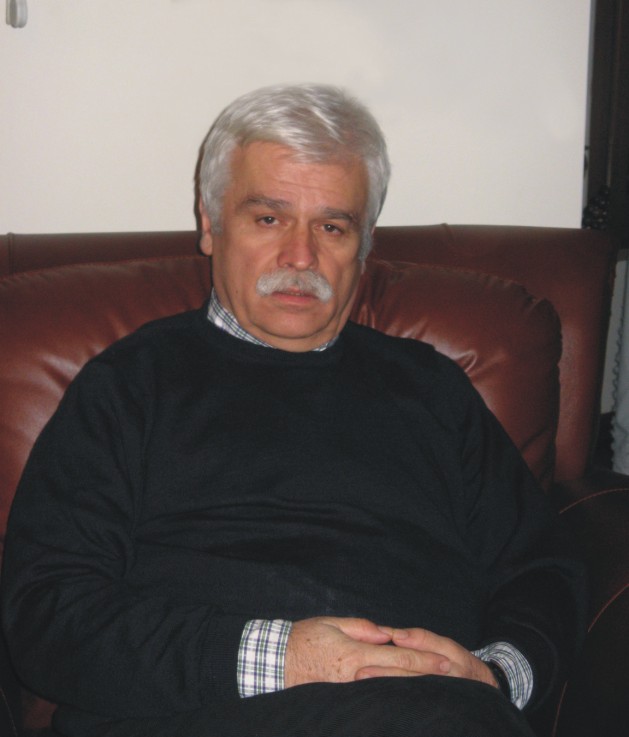|
April - June, 2009
Volume 11, Issue 2

SAFAK ALPAY(on the occasion of his sixtieth birthday)
A biographical note about Safak Alpay
Article (eng.) - [pdf] [zip-pdf]
Weak continuity of a superposition operator in sequence spaces
Alekhno E.
Under study are the conditions of weak continuity of a superposition
operator in a sequence space. We give the conditions for the weak
continuity of the superposition operator be equivalent to its affinity.
At the same time, in the space of vanishing sequences each bounded
continuous function generates a weakly continuous superposition operator.
We demonstrate by example that the hypothesis of boundedness
is essential and show that in an arbitrary finite-dimensional space
of sequences there always is a superposition operator that is weakly
continuous but fails to be representable as a sum of an affine operator
and a finite-rank operator.
Article (rus.) - [pdf] [zip-pdf]
On riesz spaces with b-property and b-weakly compact operators
Alpay S., Altin B.
MSC (2000): 46A40, 46B40, 46B42.
An operator
T:E→X
between a Banach lattice E and a Banach space X
is called b-weakly compact if T(B) is relatively
weakly compact for each b-bounded set B in E.
We characterize b-weakly compact operators among
o-weakly compact operators. We show that summing operators
are b-weakly compact and discuss the relation between
Dunford-Pettis and b-weakly compact operators.
We give necessary conditions for b-weakly compact operators
to be compact and give characterizations of KB-spaces in
terms of b-weakly compact operators on them.
Article (eng.) - [pdf] [zip-pdf]
Weakly compact-friendly operators
M. Caglar, T. Misirlioglu
MSC (2000): primary 47A15.
We introduce weak compact-friendliness as an extension of compact-friendliness,
and and prove that if a non-zero weakly compact-friendly operator
B:E→E
on a Banach lattice is quasi-nilpotent at some non-zero positive vector,
then B has a non-trivial closed invariant ideal.
Relevant facts related to compact-friendliness are also discussed.
Article (eng.) - [pdf] [zip-pdf]
Functional calculus and the Minkowski duality on vector lattices
Kusraev A. G.
MSC (2000): 46A40, 47A50, 47A60, 47A63, 47B65.
The paper extends the concept of homogeneous functional calculus
to vector lattices. It is shown that a function of elements of a
relatively uniformly complete vector lattice can be naturally
defined provided that a positive-homogeneous function is defined
on some conic set and is continuous on some closed convex subcone.
An interplay between the Minkowski duality and homogeneous
functional calculus leads to the envelope representation of
abstract convex elements generated by the linear span of a finite
collection in a uniformly complete vector lattice.
Article (eng.) - [pdf] [zip-pdf]
When are the nonstandard hulls of normed lattices discrete or continuous?
Troitsky V. G.
MSC (2000): 46S20, 46B42.
This note is a nonstandard analysis version of the paper
"When are ultrapowers of normed lattices discrete or continuous?"
by W.Wnuk and B. Wiatrowski.
Article (eng.) - [pdf] [zip-pdf]
The order continuous dual of the regular integral operators on
L
p
Anton R. Schep
MSC (2000): 47B65, 47B34.
In this paper we give two descriptions of the order continuous
dual of the Banach lattice of regular integral operators on
L
p
. The first description is in terms of a Calderon space,
while the second one in terms of the ideal generated by the finite rank operators.
Article (eng.) - [pdf] [zip-pdf]
Banach lattices with topologically full centre
A. W. Wickstead
MSC (1991): 46B42, 47B60, 47B65.
After some general background discussion on the notion
of a topologically full centre in a Banach lattice,
we study two problems in which it has featured.
In 1988 Orhon showed that if the centre is topologically full
then it is also a maximal abelian algebra of bounded operators
and asked if the converse is true. We give a short proof of his
result and a counterexample to the converse. After noting that every
non scalar central operator has a hyperinvariant band, we show that
any hyperinvariant subspace must be an order ideal, provided the
centre is topologically full and conclude with a counterexample
to this in a general vector lattice setting.
Article (eng.) - [pdf] [zip-pdf]
|
|
 conference: conference: |
2009
¹1;
2008
¹1, ¹2, ¹3, ¹4;
2007
¹1, ¹2, ¹3, ¹4;
2006
¹1, ¹2, ¹3, ¹4;
2005
¹1, ¹2, ¹3, ¹4;
2004
¹1, ¹2, ¹3, ¹4;
2003
¹1, ¹2, ¹3, ¹4;
2002
¹1, ¹2, ¹3, ¹4;
2001
¹1, ¹2, ¹3, ¹4;
2000
¹1, ¹2, ¹3, ¹4;
1999
¹1, ¹2, ¹3, ¹4;
|
adress: 22, Markusa st., Vladikavkaz, 362027, RNO-A, Russia
phone: +7(8672) 59-16-22,
fax: +7(8672) 59-16-21,
e-mail: journal@alanianet.ru |
to read articles in pdf format:
|
|